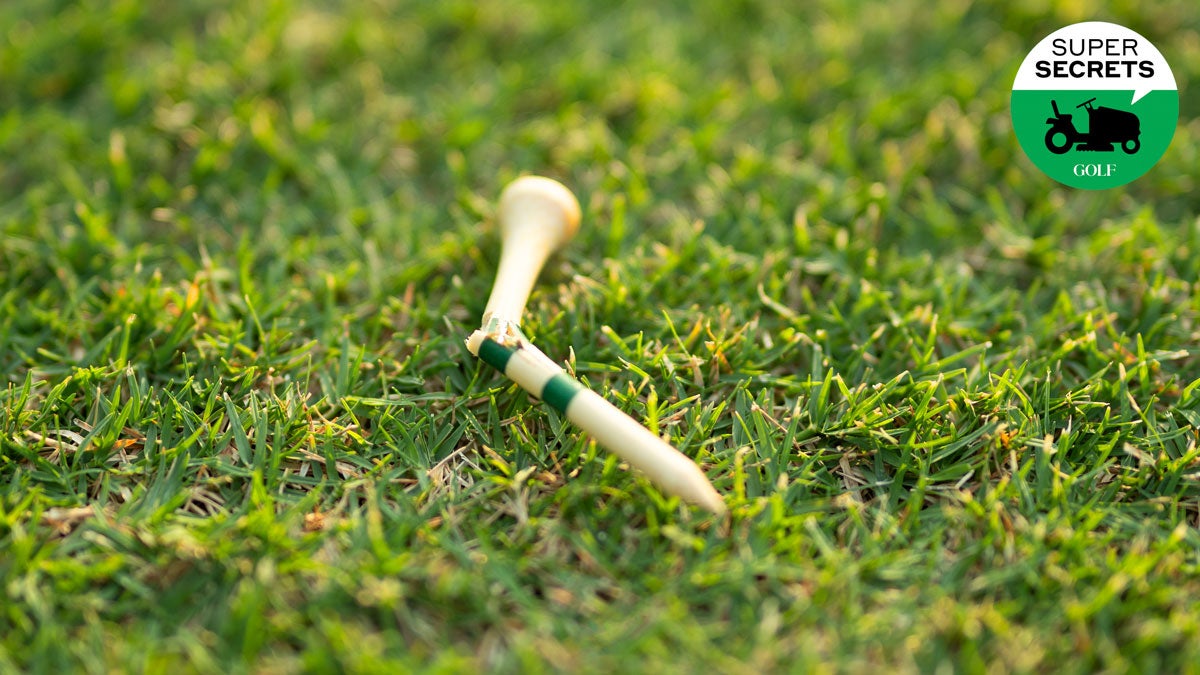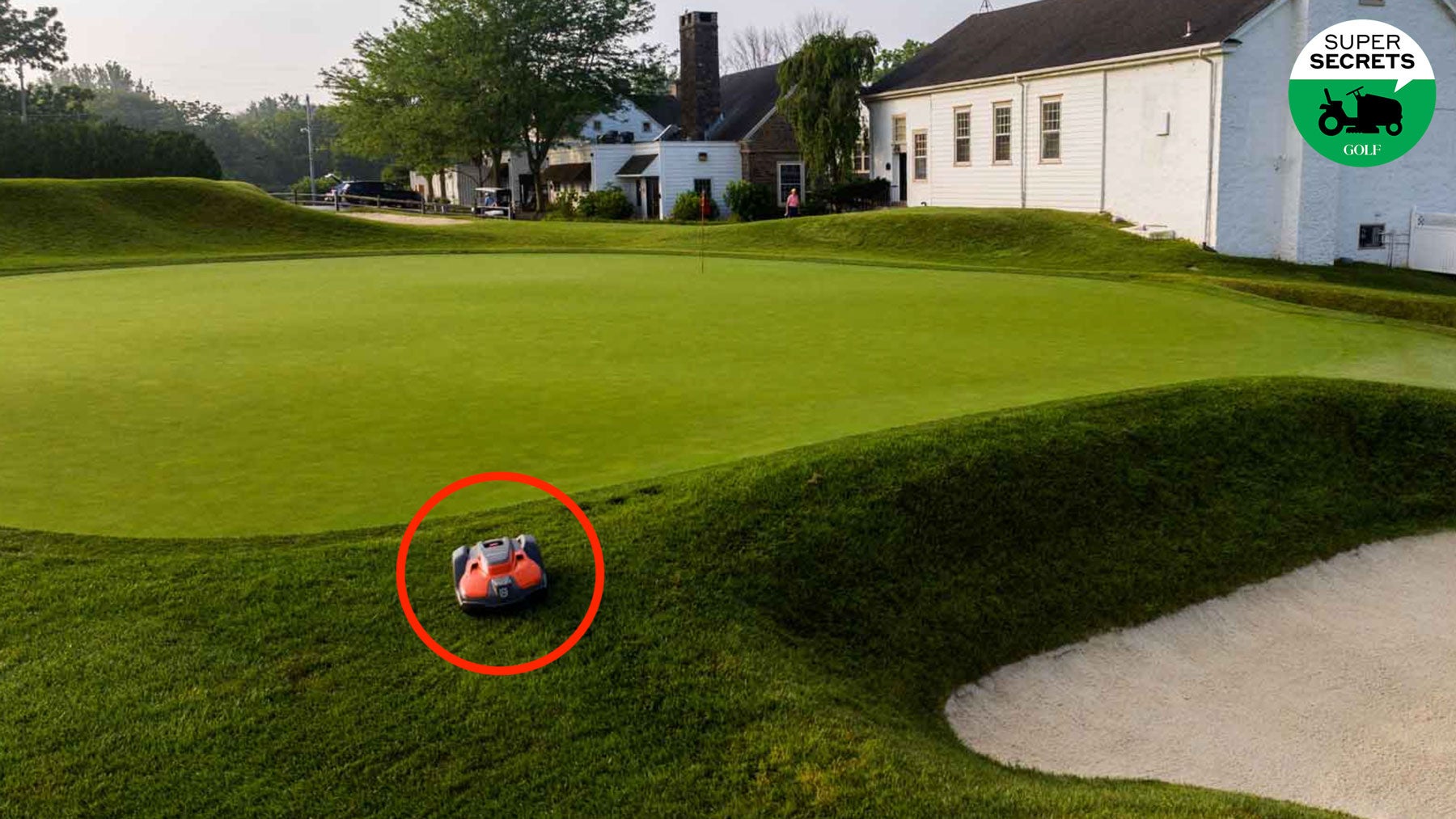How do golf courses decide on mowing patterns? It’s complicated

Stripes or solids? When it comes to golf-course mowing patterns, that is the question.
getty images
Stripes or solids?
A question you might pose while playing pool is akin to one that superintendents ask themselves when contemplating fairway mowing patterns. The two most common options are stripes and 50/50. The former calls for crisscross mow lines to create a verdant checkerboard. The latter involves a 50/50 split, with one half of the fairway mown toward the tee and the other half mown toward the green.
The choice often hinges on aesthetic preference.
But there are other considerations, top among them time, labor and fuel costs.
Turf-care is a scientific trade, infused with its share of folk wisdom. Industry consensus has long held that 50/50 is the more efficient way to go. But that’s based on anecdotal evidence.
Is it accurate?
Recently, the USGA Green Section took a closer look through a data-driven study. What were the results? Are there any important implications for golfers? Lessons for those of us mowing lawns at home?
Here’s an overview.
The study
To carry out the study, the Green Section needed a good test case. It found one at Contra Costa Country Club, in Pleasant Hill, Calif., where golf is played year-round, and mowing patterns shift with the seasons. From roughly April to October — the prime growing period for cool-season grasses in the area — the club goes with a striped mowing pattern. Come winter, though, when turf growth slows and the grass is more susceptible to wear and tear, the maintenance crew switches to 50/50 because it requires less turning, especially sharp turns, which can impart more stress. Same property. Same staff. Same equipment. A good place, in short, to draw comparisons.

You can read more about the methodology here. But the gist is this: With GPS loggers — the same devices that many courses use to track golfer movement and monitor pace of play — attached to mowers, the maintenance staff went about its business, and the USGA Green Section collected readings. The data-gathering took place in two sessions, in September 2021, and then again in March 2022.
The findings
Industry folk wisdom had it right: The data showed that 50/50 is faster. Mowing in a 50/50 pattern, operators took an average of 16 minutes per acre, compared to 18.5 minutes per acre for the striped pattern. Put another way, 50/50 turned out to be roughly 13.5 percent faster per acre per operator on average.
At Contra Costa CC, which has 28.5 acres of fairways, it took 7.5 staff hours in the 50/50 pattern, and 9.9 staff hours in the striped pattern. Of course, not all properties are the same. As acknowledged in the study, variables such as contouring, distance between holes and maintenance staffing, could influence results. But on the whole, the study concluded, “courses with more fairway area would save more time” with the 50/50 approach.
Do golfers have a preference?
The study did not explore that question. But according to George Waters, manager of USGA Green Section Education, social-media feedback on the study suggests that it’s a polarizing topic.
“People appear to have very strong opinions on both sides,” Waters says.
Do mowing patterns have any real effect on play?
For the Masters, Augusta National has been known to mow the entirety of its fairways toward the tee, in part because the solid look is pretty but also, it’s been said, to make the course play longer. The idea being that mowing grass against the direction of play reduce roll. But that last part is folk wisdom that does appear to hold up under scrutiny.

Though the USGA has not completed exhaustive research on the topic, it has carried out studies and there’s no evidence to suggest that mowing patterns have any noticeable impact on bounce or rollout in most cases. Any difference lies largely in golfer perception, which itself seems potentially meaningful (this is just us talking here, not the USGA). We know how golfers are. If you think we’re getting less roll out, we might alter our swings accordingly. This dang game has a way of getting in our heads.
Do mowing patterns matter at home?
They can, according to David Phipps, northwest regional representative for the Golf Course Superintendents Association of America. Phipps recommends that you vary your mowing direction every time you cut your grass, or at least, that you alternate between two directions.
That’s not because cutting the grass every which way is healthier for the plant. The reason is to mix it up is that it helps you avoid getting wheel ruts in your lawn. “It can also create a nice plaid look,” Phipps says, like the crisscross patterns you see on stadium infields and, ahem, some fairways, too.











